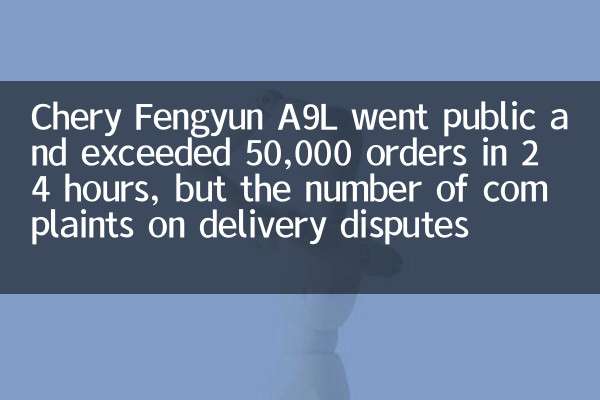BYD Haiou's battery life false label complaint: User tests CLTC battery life achievement rate is only 75%
Recently, BYD Seagull has become the focus of hot discussion on the Internet due to the issue of false battery life. Many car owners reported that there is a big gap between the actual battery life of the vehicle and the official CLTC operating conditions and the actual battery life is only about 75%. This phenomenon has aroused consumers' doubts about BYD's brand trust, and has also pushed the battery life test standards of new energy vehicles to the forefront of public opinion.
1. User test data: battery life is reduced by 25%

According to complaint data from car owner community and third-party platforms, BYD Haiou (nominal range of 405 kilometers in CLTC working conditions) is generally concentrated in 300-320 kilometers under normal temperature environment, with a achievement rate of only 75%-80%. In extreme cases (such as high-speed driving or low-temperature environments), the range may even be reduced to below 250 kilometers.
| Test conditions | CLTC nominal battery life (km) | User test battery life (km) | Achievement rate |
|---|---|---|---|
| Urban roads (25℃) | 405 | 320 | 79% |
| Highway section (120km/h) | 405 | 280 | 69% |
| Low temperature environment (-5℃) | 405 | 240 | 59% |
2. Industry comparison: CLTC standard has a wide range of "moisture"
CLTC (China's light vehicle driving conditions) is considered "looseer" by the industry because of its test scenarios that tend toward medium and low speeds and ignore energy consumption such as air conditioning. Compared with other brands of the same level, the phenomenon of battery life false label is not an isolated case:
| Car model | CLTC battery life (km) | Average actual battery life test (km) | Achievement rate |
|---|---|---|---|
| BYD Seagull | 405 | 300 | 75% |
| Wuling Fruit | 333 | 260 | 78% |
| Nezha V | 401 | 310 | 77% |
3. BYD's official response and user requests
In response to the complaint, BYD customer service responded that "CLTC battery life is the ideal state data for the laboratory", and recommended that users refer to EPA (US standard) or WLTP (global standard) conversion. However, the car owner believes that the difference in the test conditions was not clearly marked in the publicity, which is suspected of misleading. The main demands currently include:
1. Officially announce the real battery life data and test conditions
2. Provide a battery life compensation plan (such as free charging rights)
3. Optimize vehicle energy management system
4. Expert opinion: The battery life of new energy vehicles needs to be transparent
Zhang Kai, an analyst at the automotive industry, pointed out: "The CLTC standard has a large deviation from the actual scenarios of users. Car companies should indicate the multi-working endurance data in their publicity." Li Wei, professor of the Department of Automotive Engineering at Tsinghua University, suggested: "Implement the 'dynamic endurance display' technology and update the remaining mileage estimate based on real-time road conditions."
5. Consumer purchasing suggestions
1. Take 20% off CLTC battery life data as a practical reference
2. Priority is given to models that support "multi-service battery life display"
3. Pay attention to the real reputation feedback of the car owner community
This incident reflects the urgent need for the new energy vehicle industry to establish a battery life test system that is closer to the actual use scenarios of users to avoid damaging consumer rights due to "digital games". As of press time, BYD has not announced specific solutions, and subsequent progress will continue to be paid attention to.

check the details

check the details